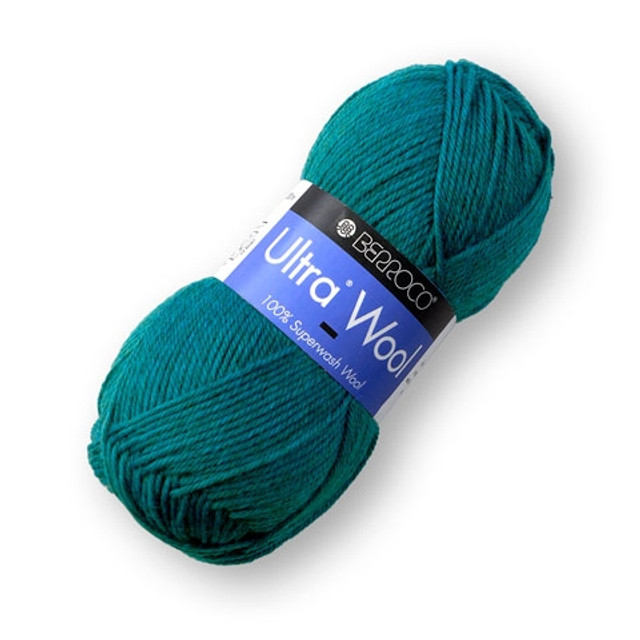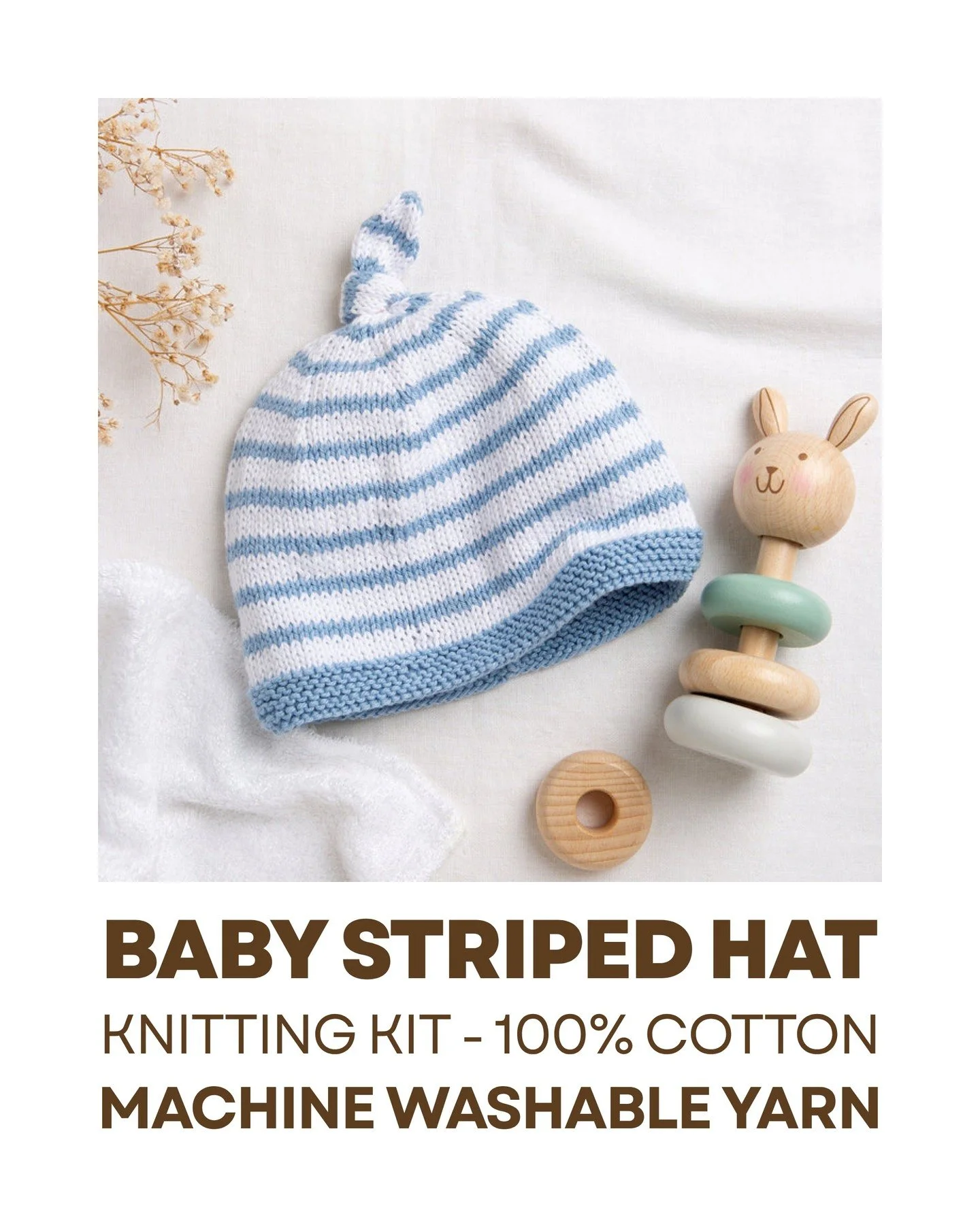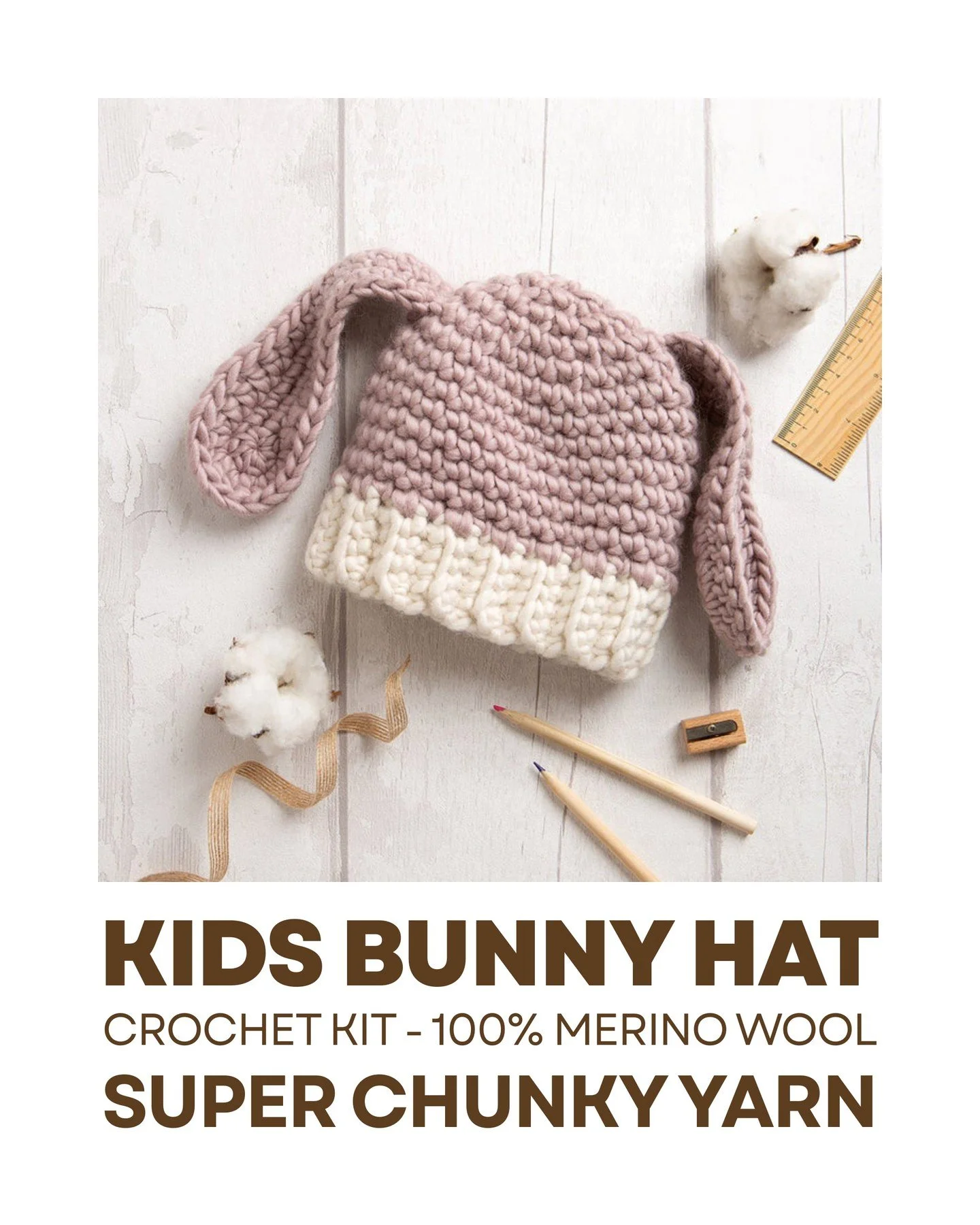The Ultimate Guide to Yarn Weights: How to Choose the Right Yarn for Your Project
Yarn weights explained (with chart, gauge + real project picks)
By AriYARN Shop & Studio — 153 N Northwest Hwy, Park Ridge, IL 60068. Shopping note: we’re cashless (card/digital wallet only).
Whether you’re picking up a crochet hook for the first time or you’ve been stitching for years, one question shows up again and again: “What yarn weight should I use?”
Yarn weight is the backbone of project success. It affects your gauge, the drape of your fabric, how warm the finished piece feels, and even how fast you’ll finish. This hub walks you through the full yarn weight system (0–7), plus the real-life stuff pattern labels don’t always explain: how to spot yarn weight without a label, how fiber changes feel, and how to substitute confidently.
- Yarn weight = thickness of the strand (not the skein’s ounces/grams).
- The standard system runs from 0 (lace) to 7 (jumbo).
- To match a pattern, prioritize gauge + yardage + fiber behavior (stretch, drape, washability).
- No label? Use WPI (wraps per inch) or compare against a known yarn.
- Want help choosing in person? Bring your pattern (or mystery yarn) to AriYARN — or stop by a class / workshop.
Quick answer: what yarn weight should I use?
Pick the yarn weight your pattern is written for — then confirm with a swatch. If you don’t have a pattern, choose based on the fabric you want: fingering (1) and sport (2) make lightweight, flexible fabric (great for socks, baby items, and layering pieces); DK (3) is the “sweet spot” for wearables with clear stitch definition; worsted/aran (4) is beginner-friendly and versatile; bulky (5) and super bulky (6) are fast, cozy, and bold; and jumbo (7) is dramatic and best for oversized decor. When substituting, match gauge (stitches per 4") first, then yardage, then fiber behavior (wool stretches and bounces; cotton is crisp and heavy; alpaca drapes). If your yarn is unlabeled, estimate weight with WPI (wraps per inch) and compare to the chart below. Still unsure? Bring your pattern or mystery yarn to AriYARN Shop & Studio in Park Ridge — we’ll help you match the right weight and fiber, and we can suggest tools or classes to make the project smoother.
Yarn weights chart (0–7) — quick reference
These are typical ranges. Always follow your pattern’s gauge and swatch for fit.
| Category | Common names | Typical gauge (sts/4") | Needles / hooks (typical) | Great for |
|---|---|---|---|---|
| 0 | Lace | 32–40+ | Needles ~1.5–2.25mm • Hooks ~0.6–2mm | Shawls, lace, halos held with other yarn |
| 1 | Fingering / Sock / 4-ply | 27–32 | Needles ~2.25–3.25mm • Hooks ~2.25–3.5mm | Socks, baby sets, lightweight shawls |
| 2 | Sport / Fine | 23–26 | Needles ~3.25–3.75mm • Hooks ~3.5–4.5mm | Baby garments, light sweaters, hats |
| 3 | DK / Light / 8-ply | 21–24 | Needles ~3.75–4.5mm • Hooks ~4–5mm | Wearables, colorwork, accessories |
| 4 | Worsted / Aran / Medium | 16–20 | Needles ~4.5–5.5mm • Hooks ~5–6.5mm | Blankets, sweaters, hats, beginner projects |
| 5 | Bulky / Chunky | 12–15 | Needles ~5.5–8mm • Hooks ~6.5–9mm | Quick gifts, cowls, warm hats |
| 6 | Super Bulky | 7–11 | Needles ~8–12.75mm • Hooks ~9–16mm | Chunky throws, statement scarves |
| 7 | Jumbo | ≤6 | Oversized tools / arm knitting | Oversized decor, dramatic texture |
What is yarn weight?
Yarn weight is the thickness of the strand — not the weight of the skein in your hand. It drives:
- Gauge (stitches per inch), which affects finished size
- Needle/hook size (and how dense the fabric becomes)
- Drape (floaty vs structured)
- Warmth and breathability
- Time to finish (bulky finishes fast; lace takes patience)

How to identify yarn weight without a label (WPI method)
If your yarn label is missing (or it’s a “mystery ball”), the fastest practical method is WPI: wraps per inch. You wrap yarn snugly (not stretched) around a ruler for one inch, count wraps, and compare to a reference range.
Fast WPI checklist
- Use a ruler (or a WPI tool) and wrap the yarn around one inch.
- Wrap snugly with no gaps — but don’t stretch the yarn.
- Count the wraps. Compare to typical ranges (example: more wraps = thinner yarn).
- Confirm by making a small swatch and measuring stitches per 4".
Pro tip
Bring unlabeled yarn to AriYARN — we’ll help you estimate weight and suggest a project that fits the yardage you have.
US ↔ UK yarn terms (the “DK / aran / 4-ply” confusion)
Patterns don’t always use the same language. In the US you’ll see “Category 0–7,” while UK terms often include 4-ply (similar to fingering), DK (category 3), and aran (often close to worsted/medium). Always use gauge to confirm.
| US category | Common US label | Common UK label | When it matters most |
|---|---|---|---|
| 1 | Fingering / Sock | 4-ply | Socks + baby garments (fit/gauge is unforgiving) |
| 3 | DK | DK / 8-ply | Garments and colorwork (stitch definition) |
| 4 | Worsted / Medium | Aran (often) | Beginner patterns, blankets, sweaters |
Deep dive: each yarn weight (0–7)
Yarn Weight 0 — Lace
Lace-weight yarn is the lightest and most delicate category. It’s ideal for elegant shawls, wraps, and heirloom lacework. Lace projects reward patience and careful stitch counting.

Pro tip
- Use lifelines when knitting lace — they make it easier to fix mistakes.
- Hold lace with another yarn to add a soft halo and warmth without dramatically changing the main fabric.
- Great “upgrade move”: lace mohair + DK or worsted for texture and glow.
Ideal projects:
Yarn Weight 1 — Super Fine (Fingering / Sock)
Fingering weight is slightly heavier than lace and is famous for socks, baby garments, gloves, and lightweight shawls. Many indie dyers love fingering because colorwork and stitch patterns pop.

Pro tip
If you're knitting socks, look for yarns with 10–25% nylon for added durability. For baby items, many makers prefer soft, washable fibers and gentle finishes.
Ideal projects:
Yarn Weight 2 — Sport (Fine)
Sport weight is still light, but it builds fabric faster than fingering. It’s a classic choice for baby clothes, hats, sweaters, and smooth colorwork.

Pro tip
Sport weight is excellent for stranded colorwork and baby garments because it’s light, smooth, and still quick enough to feel satisfying.
Ideal projects:
Yarn Weight 3 — Light (DK / Light Worsted)
DK is the “do-everything” weight: versatile, wearable, and fantastic for stitch definition. It’s a favorite for garments, accessories, and crisp colorwork.

Pro tip
DK is a great bridge weight for makers graduating from worsted: it feels “grown up” without being slow.
Ideal projects:
Yarn Weight 4 — Medium (Worsted / Aran)
Worsted is the most common “default” yarn weight in many US patterns. It’s friendly for beginners, flexible for most projects, and easy to substitute when you understand gauge.

Pro tip
If you’re learning, worsted lets you see stitches clearly and progress quickly — it’s why so many tutorials start here.
Ideal projects:
Yarn Weight 5 — Bulky (Chunky)
Bulky yarn is fast, warm, and bold. It’s excellent for winter accessories and quick gifts. It’s also forgiving for newer crafters because stitches are easier to see.

Pro tip
- Bulky yarn is great for last-minute gifts — cowls and hats can be a one-evening project.
- Fiber matters: some bulky yarns are airy and light; others are dense and heavy. Touch it before committing.
- In our shop, yarns are color coded for easy reference, taking away the guesswork.
Ideal projects:
Yarn Weight 6 — Super Bulky
Super bulky makes a statement — huge texture, fast progress, and maximum coziness. Perfect for chunky throws and oversized accessories.

Pro tip
Because super bulky fabric is thick, small changes in tension can show. Keep your hands relaxed and your stitches consistent.
Ideal projects:
Yarn Weight 7 — Jumbo
Jumbo yarn is the thickest category. It’s often used for arm knitting or oversized tools. The look is dramatic — and it’s surprisingly forgiving because the stitches are huge.

Pro tip
Jumbo projects are more about vibe than precision. Keep tension even, embrace texture, and enjoy the fast finish.
Ideal projects:
How to substitute yarn weights (without heartbreak)
Substituting yarn is totally doable — if you match the right priorities in the right order:
- Match gauge first. Swatch and measure stitches per 4".
- Match yardage second. Skeins vary wildly. Count yards/meters, not balls.
- Match fiber behavior third. Wool bounces; cotton drapes; alpaca can “grow”; silk adds slip and shine.
Substitution reality check
Moving up or down a whole weight (DK → worsted, worsted → bulky) can change fabric thickness and sizing. You can still do it — but you’ll often need pattern math, different needles/hooks, or a different finished size.
Best yarn weights for baby knitting & crochet projects
For baby makes, most crafters prefer lighter weights that create soft, flexible fabric: fingering (1), sport (2), and DK (3). The other big factor is fiber: many parents want easy care and gentle feel, so washable natural fibers (and thoughtful blends) are popular.


Baby-project safety + comfort notes
- Choose soft fibers and avoid “sheddy” halos for baby face items.
- Prioritize washability (parents will thank you).
- Use smooth finishes and secure ends well (especially for crochet).
Want the fastest path to “right yarn, right size”?
Shop online at /store (shipping across the continental USA) or visit us in Park Ridge for help matching yarn weight, fiber, and gauge. Reminder: we’re cashless (card/digital wallet only).
FAQ: yarn weights (quick, practical answers)
What is the most common yarn weight for beginners?
Worsted/medium (Category 4) is the most common beginner-friendly choice. It’s easy to see stitches, widely used in tutorials, and works for hats, scarves, and blankets.
Can I substitute yarn weights in a pattern?
Yes — but you must check your gauge. Substituting yarn weight changes stitch size, fabric thickness, and often finished measurements. Swatch first, then adjust needle/hook size or pattern math.
How do I know what yarn weight my yarn is if there’s no label?
Use WPI (wraps per inch) to estimate the thickness, then confirm with a small swatch and measure stitches per 4". If you’re local, bring it to AriYARN and we’ll help you identify it.
What’s the difference between DK and worsted?
DK (Category 3) is lighter and typically makes a smoother, more flexible fabric. Worsted (Category 4) is thicker, warmer, and faster to work. Always follow the pattern gauge.
Why does my yarn keep splitting when I knit or crochet?
Splitting often comes from a loosely plied yarn, a sharp hook/needle tip, or working too tightly. Try a slightly blunter tip, relax tension, and choose yarns with a firmer twist for crisp stitch definition.
Durable yarn options for blankets?
Look for fibers/blends that resist pilling and handle repeated washing. For cozy warmth, wool blends are popular; for easy care and breathability, cotton blends work well. Match durability to how the blanket will be used.
Bookmark for later / Related guides
- Best Yarn Shops in Chicago (Local Guide)
- Knitting & Crochet Classes in Chicago (Beginner to Advanced)
- How to Buy & Redeem an AriYARN Gift Card
- Classes & Workshops • Shop /store
Evergreen note: we keep this guide updated as standards and maker preferences evolve. To refresh it anytime, update the “last reviewed” date near the top and the JSON-LD dateModified at the bottom.
